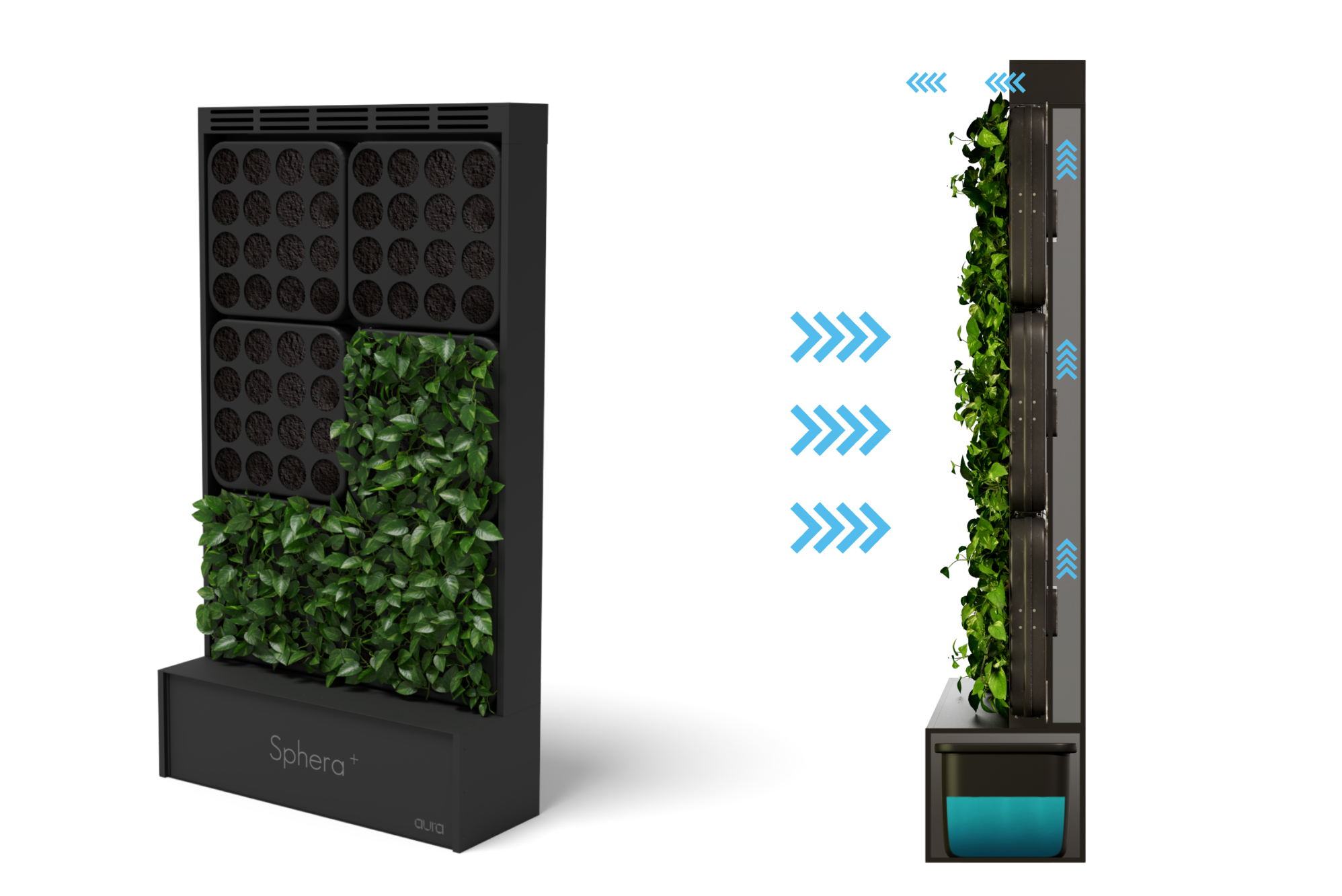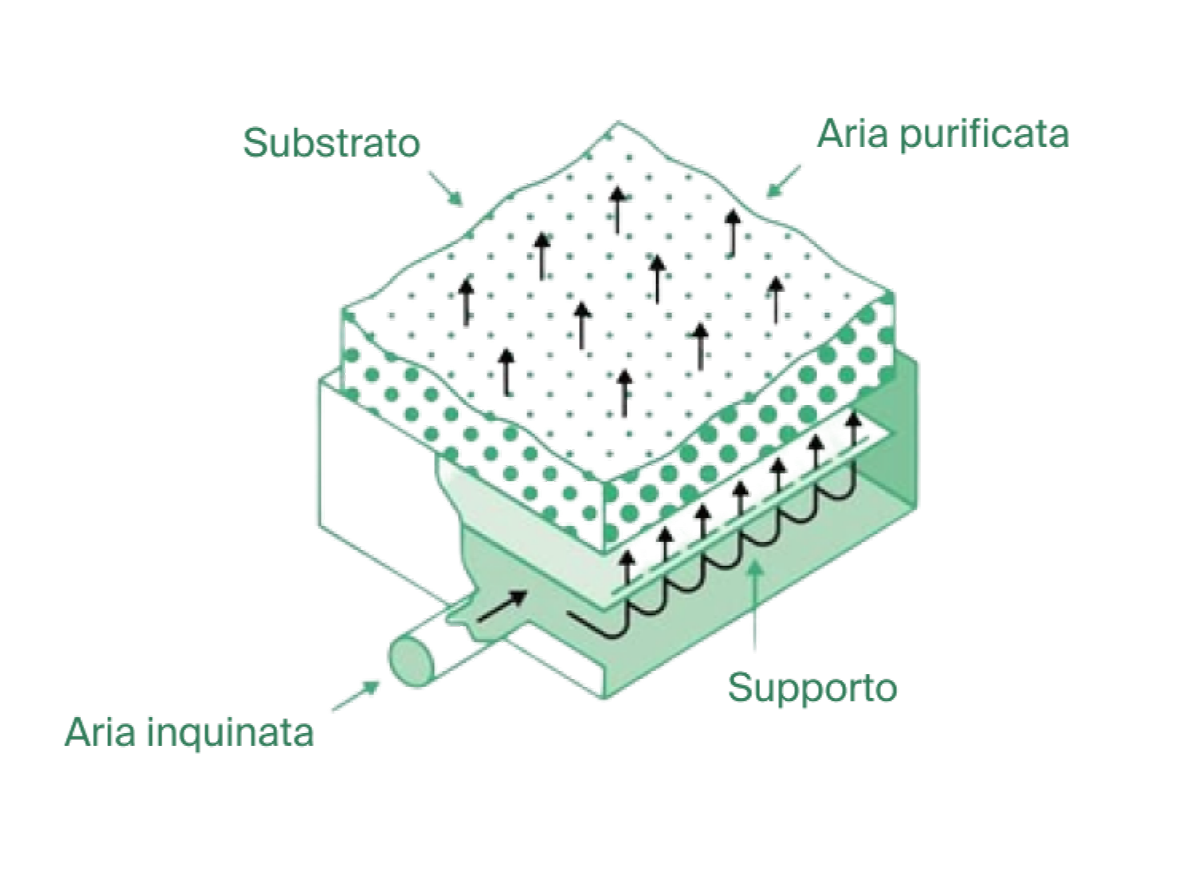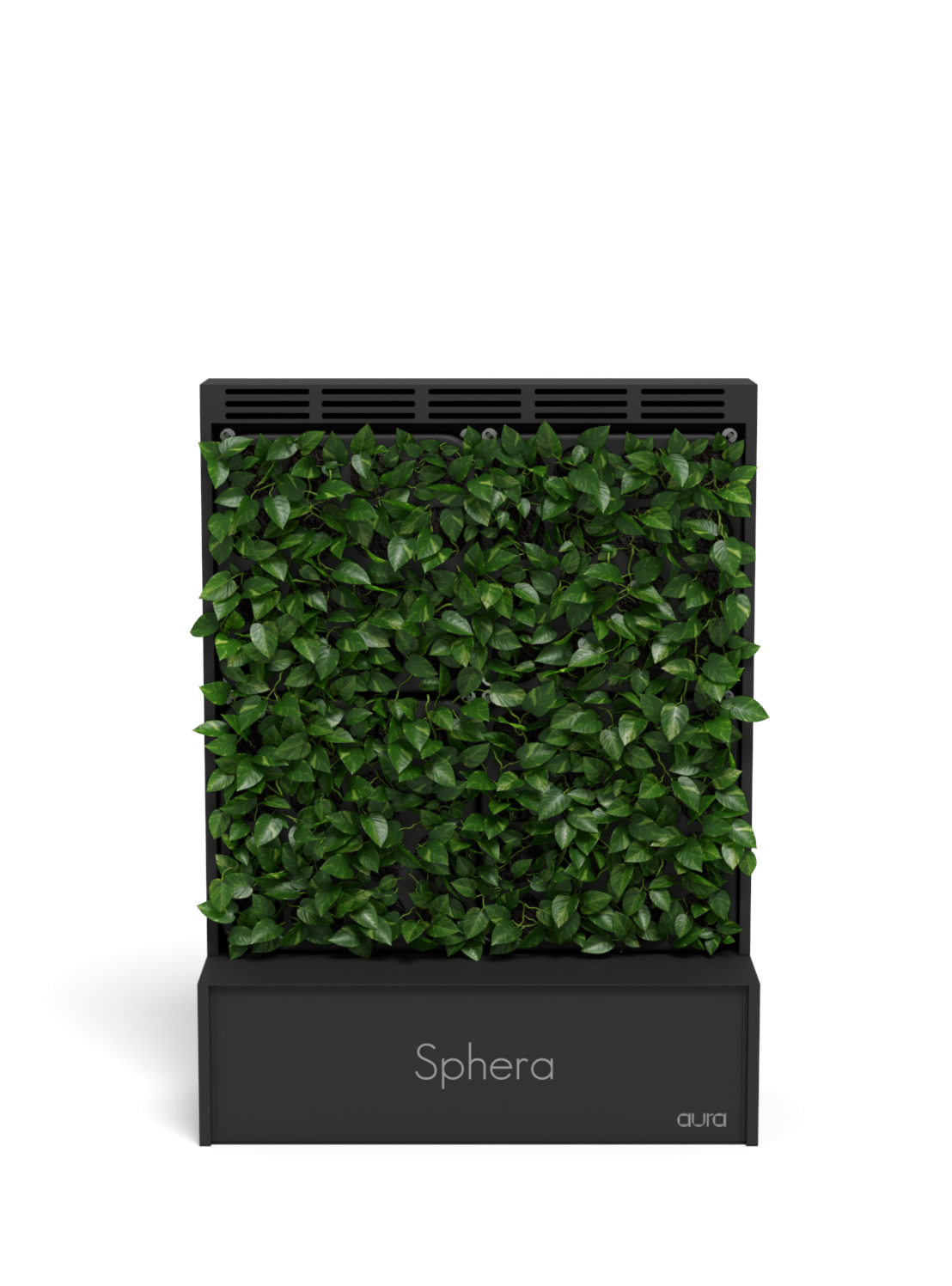Science
Biofiltration
Sick Building Syndrome
Air pollution

How does it work?
The breathing mode forces the room air through the biofilter thanks to the fans positioned on the back of the modules and thus the green wall absorbs and eliminates the various pollutants. In this way, the particles and gasses are trapped in the substrate and then eliminated by the plants through their roots by phytoremediation.
The biofilter is formed by the purifying substrate in which 16 plants are "installed".
Aura was born from the research for a completely natural substrate with high purifying properties (patent pending) and from the selection of plants with useful properties that can absorb the various gaseous elements. Some pollutants are in fact NUTRIENTS for plants!
Biofiltration
Air biofiltration is a treatment for purifying particulate matter and gases in the air based on a biochemical process carried out by microorganisms in the substrate and by plant roots. Biological filters remove pollutants through three main mechanisms: biodegradation, adsorption of micropollutants and filtration of suspended solids.
Biofiltration systems adapt well to large spaces and people thanks to the vast area of living nature. It has also been shown to be the cheapest, most sustainable and least invasive method of air purification compared to conventional technologies.

SBS
Numerous investigations of buildings where health or comfort problems were reported found that the predominant problem (in almost half of the cases) was inadequate ventilation.
Many chemicals in indoor air are known or suspected to cause irritation or stimulation of the sensory system and can lead to sensory discomfort and other symptoms commonly seen in SBS. Some studies conducted in offices and other public-use buildings in several countries have found that the incidence of disorders among occupants ranges from 15% to 50%.
Excerpt from the website of the Italian Ministry of Health.
HVAC
CO2
In 2016, large buildings were responsible for about 41% of energy consumption, 60% of electricity consumption and 36% of CO2 emissions.
The application of a breathing green wall as a biofilter can save about 60% of energy in summer and 50% in winter, guaranteeing significant energy savings in HVAC systems and a reduced environmental impact of the building.
We have estimated that 1 square meter of the Aura wall, with more than 50 plants installed, can absorb 5.5 g of CO2 per hour.
